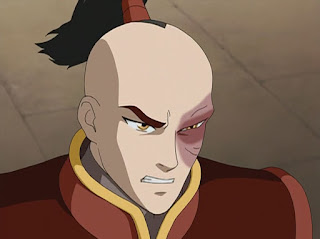Avatar: The Last Airbender is, in this guy’s humble opinion,
the single greatest series aimed (primarily) at kids to ever grace my TV (or computer)
screen. With some of the best characters, themes, fight sequences and morality
stories I’ve personally come across, my love for this show is perhaps justified,
but somehow re-watching the series again as an adult for the seventh time (I
think, give or take a viewing) is a little hard to justify to myself. So I
thought I should really look into why I love it so much, on an episode by
episode basis. Much and more has been written about ATLA and subsequently TLOK but
hopefully someone is interested in reading up on what is without doubt (again,
in my eyes) the most ambitious animated series ever made (It would be very hard
to compare ATLA to anime, the styles are very different so take that with a
pinch of salt). So, here begins an episode by episode review of a series that
isn’t particularly relevant anymore, that everyone has likely watched already. Yep,
this’ll rake in the page views for sure.
The opening for the first episode introduces the world and
sets the stage for the show as a whole quite well; establishing the avatar as
the protector of the balance between the four elemental nations (Earth, Fire,
Water and Air) and reveals a little of the scope and length of the war, where
after 100 years the Fire nation are nearing victory. Finally the introduction
ends with the narrator (whom you know to be Katara from the rest of the episode)
stating that she still has hope that the Avatar will return and save the world.
Pretty great set up if you ask me and boy do they ever deliver on the premise.
Enter the episode itself and we are quickly introduced to
Sokka and Katara and what I’ll put down as the first moral lesson; while Sokka
is attempting to spear a fish Katara catches one herself with waterbending and
Sokka dismisses her abilities of hand, while doing so allowing the fish to escape
and soaking himself in water; a nice little story warning of the pitfalls of judging
someone’s abilities without allowing them to actually use them. From there we
are introduced to a variety of characters; Aang who emerges from an iceberg
with glowing eyes and tattoos, his flying bison Appa (who is our first taste of the menagerie
of wonderfully strange animals throughout the series), and Zuko and Iroh
the banished prince and his uncle who are hunting for the avatar.
 |
| These, as we are told, are apparently penguins |
Running down these characters the show instantly reveals a
lot of their character traits and motivations; Katara who is unhappy with being
looked down upon because of her gender and expected role in the tribe (wonderfully
done with a natural introduction as to how her views have come about,
demonstrating the disbelief that Sokka has regarding her ability to catch a
fish as that’s not the role she is expected to play, Sokka is holding the spear
and is at the head of the boat filling said role), Sokka who just doesn’t want
to have anything to do with ‘magic water’, airbenders or other things that don’t
make sense, Aang who is cheerful and fun-loving despite the responsibilities
and pressures of a world he doesn’t fully understand (both because of his young
age and his time in the iceberg), Zuko who is fuelled by anger and a vague
allusion to his honour (at this point unexplained) and finally Iroh who loves tea.
The visual language introduced is fantastic as well; with
three of the four elements represented via the costumes of the introduced characters;
black, gold and red for the fire nation, white, purple and blue for the water
tribes and orange, yellow and blue for the air nomads (clearly taking quite
heavy influence from the traditional robes of Buddhist monks, just as the water
tribe outfits draw upon the Inuit’s heavy furs).
Visually the show is overflowing with style and musically it
does so as well with a great score made up mostly of tribal drums and
percussion, unusual stringed instruments and cymbal swells; making for an
understated but perfectly fitting musical score that really helps set the mood
and atmosphere for each scene. The end credits were always a bitter-sweet
memory for me as it represented the end of my favourite show, but I also loved
the music and hearing it again after ending on a bit of a cliff hanger is
wonderful and incredibly nostalgic for me as I’m sure it is for any of you who
may have watched it.
Overall this episode is a great introduction into a detailed,
vibrant and joyous world that walks the line between making the content age
appropriate for younger viewers and also dark and deep enough for older viewers
in a way nothing else I’ve seen has managed. With fantastic art, music,
characters and direction this episode does a really good job of introducing
everything you really need to know without veering into exposition; something
much easier said than done.
Aaand a post script: I didn't discuss the story in it's entirety as some may not have watched it. If that's you either watch it or ignore these posts! In all future posts I will fully discuss the plot and even though the show is not ruined without the element of the unknown; it's not made any stronger for it's absence, so don't spoil it for yourself!






please publish this video
ReplyDeleteavatar the last airbender s1 e1